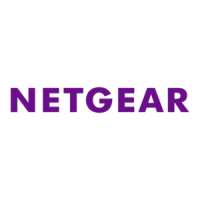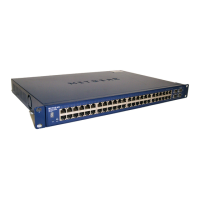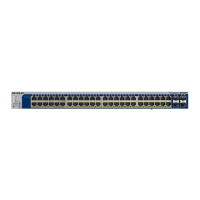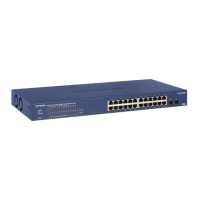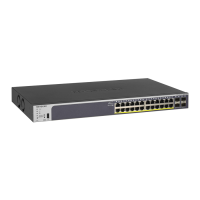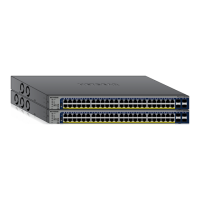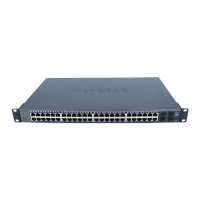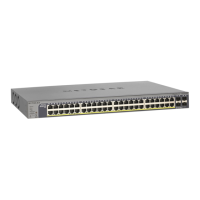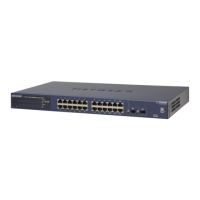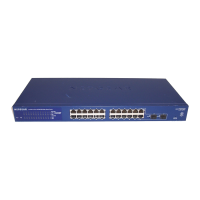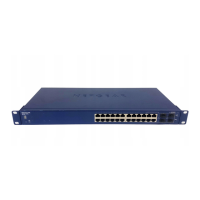

Do you have a question about the NETGEAR GS716T and is the answer not in the manual?
| Switch type | Managed |
|---|---|
| Switch layer | L3 |
| Quality of Service (QoS) support | Yes |
| Stackable | - |
| Certification | CE, FCC, VCCI, EN, C-Tick, CCC, CSA, UL/cUL, IEC |
| Product color | Blue |
| LED indicators | Activity, Link, Power |
| SFP module slots quantity | 2 |
| Basic switching RJ-45 Ethernet ports type | Gigabit Ethernet (10/100/1000) |
| Basic switching RJ-45 Ethernet ports quantity | 16 |
| Number of VLANs | 256 |
| Networking standards | IEEE 802.1D, IEEE 802.1as, IEEE 802.1s, IEEE 802.1v, IEEE 802.3, IEEE 802.3ab, IEEE 802.3ad, IEEE 802.3i, IEEE 802.3u, IEEE 802.3x, IEEE 802.3z |
| Copper ethernet cabling technology | 10BASE-T, 100BASE-TX, 100BASE-T, 1000BASE-T |
| Noise level | 0 dB |
| Mean time between failures (MTBF) | 567680 h |
| DHCP features | DHCP client |
| Security algorithms | 802.1x RADIUS, HTTPS, SSL/TLS |
| AC input voltage | 100 - 240 V |
| AC input frequency | 50 - 60 Hz |
| Power consumption (typical) | 14.4 W |
| MAC address table | 16000 entries |
| Number of static routes | 32 |
| Operating altitude | 0 - 3000 m |
| Storage temperature (T-T) | -20 - 70 °C |
| Operating temperature (T-T) | 0 - 50 °C |
| Storage relative humidity (H-H) | 0 - 95 % |
| Operating relative humidity (H-H) | 0 - 90 % |
| Cables included | AC |
| Supported network protocols | IP |
| Depth | 204 mm |
|---|---|
| Width | 440 mm |
| Height | 43 mm |
| Weight | 2570 g |
Overview of initial system configuration and user interface access, including Smart Control Center utility usage.
Describes the embedded web server and management software for monitoring and managing switch functions via a web browser.
Explains how to connect the switch to the network and configure its IP address, subnet mask, and default gateway.
Outlines methods to access the GS716T/GS724T management interface using a web browser or Smart Control Center.
Displays switch status and specifies basic information like management interface IP, system clock, and DNS settings.
View and monitor physical port information, including port configuration and flow control settings.
Virtual LANs for network segmentation, security, and management, allowing workstations to be grouped logically.
Configure switch queueing aspects to provide QoS behavior by mapping packet priority to outbound queues.
Supports DiffServ for traffic classification and QoS treatment based on defined per-hop behaviors.
Configure login password, RADIUS, TACACS+, and authentication lists for secure management access.
Details configuring HTTP and Secure HTTP access, Access Control Profiles, and Access Rules for management interface.
Implements port-based network access control using 802.1X, involving authenticators, supplicants, and authentication servers.
Covers configuring MAC Filters, Storm Control, Port Security, and Protected Port settings for traffic management.
Details creating and applying IPv4, IPv6, and MAC ACLs for traffic flow control and network security.
Options for rebooting the switch or restoring it to factory default settings to resolve issues or reconfigure.
